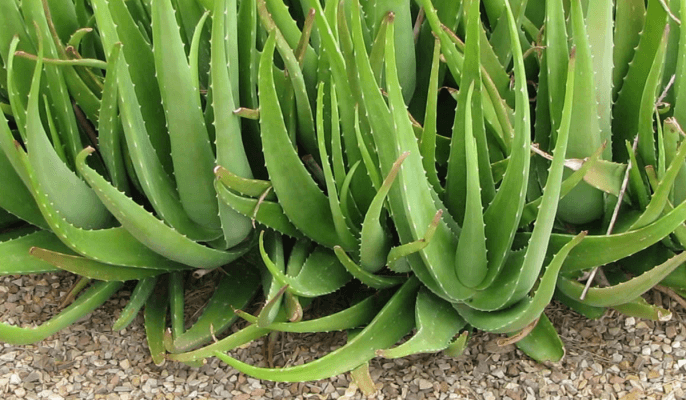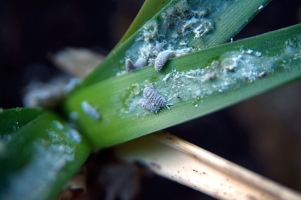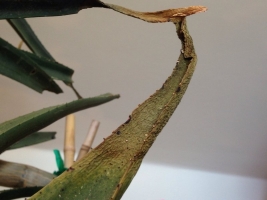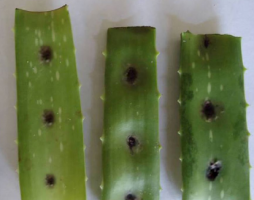
General Information
It derives its name “Aloe vera” from the Arabic word Alloeh which means shining bitter substance. The inner part of the leaf containing gel and latex is used to prepare various medicines. It contains Vitamins A, B1, B2, B6, B12, Folic Acid, Niacine. Medicines prepared from Aloe vera are used for burns and sunburn, as well as a variety of skin diseases like eczema, pruritus, psoriasis, acne etc. It is a stemless plant with an average height of 24cm-39cm having thick and fleshy leaves. The leaves attain a height of 0.5m. The major planting areas of Aloe vera are India, Australia, the USA, Japan and Europe. In India, it is found in Punjab, Andhra Pradesh, Arunachal Pradesh, Assam, Gujarat, Haryana, Jharkhand, Kerala, Madhya Pradesh, Maharashtra, Manipur, Mizoram, Nagaland, Orissa, Rajasthan, Uttaranchal states.
Climate
- Temperature- 25-40°C
- Rainfall- 35-40cm
- Sowing Temperature- 30-35°C
- Harvesting Temperature- 25-35°C
Soil
The plant can be grown in various soils ranging from sandy coastal soils to loamy plains. It cannot withstand water logging conditions. It gives the best results when grown under well-drained loam to coarse sandy loam having pH ranges up to 8.5.
Popular Varieties With Their Yield
There are around 150 species of Aloe belonging to the family Liliacae. Aloe barbedensis, A. chinensis, A. perfoliata, A. vulgaris, A indica, A. littoralis and A. abyssinica are commonly grown varieties and have the most therapeutic value.
IC111271, IC111269, IC111280, IC111273, IC111279 and IC111267:-Released by National Botanical and Plant Genetic Resource, ICAR, Delhi. It has high aloin content.
IC111267, IC1112666, IC111280, IC111280, IC111272 and IC111277:– Released by National Botanical and Plant Genetic Resource, ICAR, Delhi. It contains high gel content.
AL-1:– Released by Central Institute of Medicinal and Aromatic Plants, Lucknow.
Land Preparation
Roots of Aloe vera did not penetrate below 20-30 cm so depending upon soil type plough the land thoroughly and bring the soil to a fine tilth. At the time of last ploughing add 6 tons per acre of well-decomposed cow dung in soil. Forms ridge and furrow for the planting of suckers at 45 or 60 cm apart. If necessary irrigate the field. Plant suckers at 40 or 30 cm apart.
Sowing
Time of sowing: Plant suckers in July-August for better growth. Under irrigated conditions, sowing can be done around the year except in winter months.
Spacing: Normally spacing of 45 cm x 40 cm or 60 cm x 30 cm is followed.
Sowing Depth: Plant three to four-month-old suckers in a pit having a depth of 15 cm.
Method of sowing: Aloe vera is obtained by cutting the leaves at their base and letting yellow, bitter Juice drain out. The water is evaporated off from the juice by heating and that results in a light to dark brown mass.
Seed
Seed Rate: Usually, about 22000 suckers are required for one acre of land.
Seed Treatment: Use healthy suckers for cultivation. 3-4 months old suckers having 4-5 leaves are used as planting materials.
Fertilizer
Fertilizer Requirement (kg/acre)
| UREA | SSP | MURIATE OF POTASH |
| 44 | 125 | 34 |
Nutrients Requirement (kg/acre)
| NITROGEN | PHOSPHORUS | POTASH |
| 20 | 20 | 20 |
At the time of land preparation, apply 60-80 qtl per acre of well-decomposed cow dung. Apply basal dose of N:P: K@20:20:20 kg/acre in the form of Urea@44 kg, Super Phosphate@125 kg and MOP@34 kg per acre.
Weed Control
Do weeding and earthing up and keep the field weed-free. Weeding is to be done at proper intervals. Weeding is mainly done twice a year.
Irrigation
In summer or dry conditions, apply irrigation with an interval of 2 weeks. In the rainy season, it does not require any irrigation and in the winter season, less irrigation should be given as the plant does not take up much water. First irrigation must be done immediately after suckers get planted. Do not overwater the fields as they are harmful to crops. Remember that before watering the crops again let fields dry first. Before irrigation drenching should be done so that extra water will run out.
Plant protection
- Pest and their control:

Mealy bug: Caused by Lepidocephalus and Pseudococcus. The leaves start yellowing and withering.
Application of Methyl parathion@10 ml or Quinalphos@20 ml in 10 Ltr of water is done on the roots and shoots of the plant.
- Disease and their control:

Black brown leaf spots: Black Brown spots are characterized by reddish-brown spores that occur in oval or elongated pustules. The disease can develop rapidly when free moisture is available and temperatures are near 20°C. Successive generations of urediniospores can be produced every 10-14 days if conditions are favourable.

Anthracnose: It is a disease that causes many diseases such as dieback, twig cankers, blotches, defoliation and shoot blight. Spraying 70% Neem oil helps to cure this disease.
Harvesting
Aloe vera crops take 18-24 months to fully mature. In a year, it bears a yellow colour flower. It can be harvested 4 times a year. 3-4 leaves cut from each plant. Carry out picking in the morning or the evening. The leaves are regenerated and thus crop can be harvested for up to 5 years.
Post-Harvest
Allow freshly harvested plants to wilt and lose moisture in the field before transporting. Wilting is noticed normally within 24 to 72 hours. However, the plant should be kept dry and cool to prevent fermentation or mould growth. A concrete floor under shade can be used.
Financial and Business expert having 30+ Years of vast experience in running successful businesses and managing finance.





